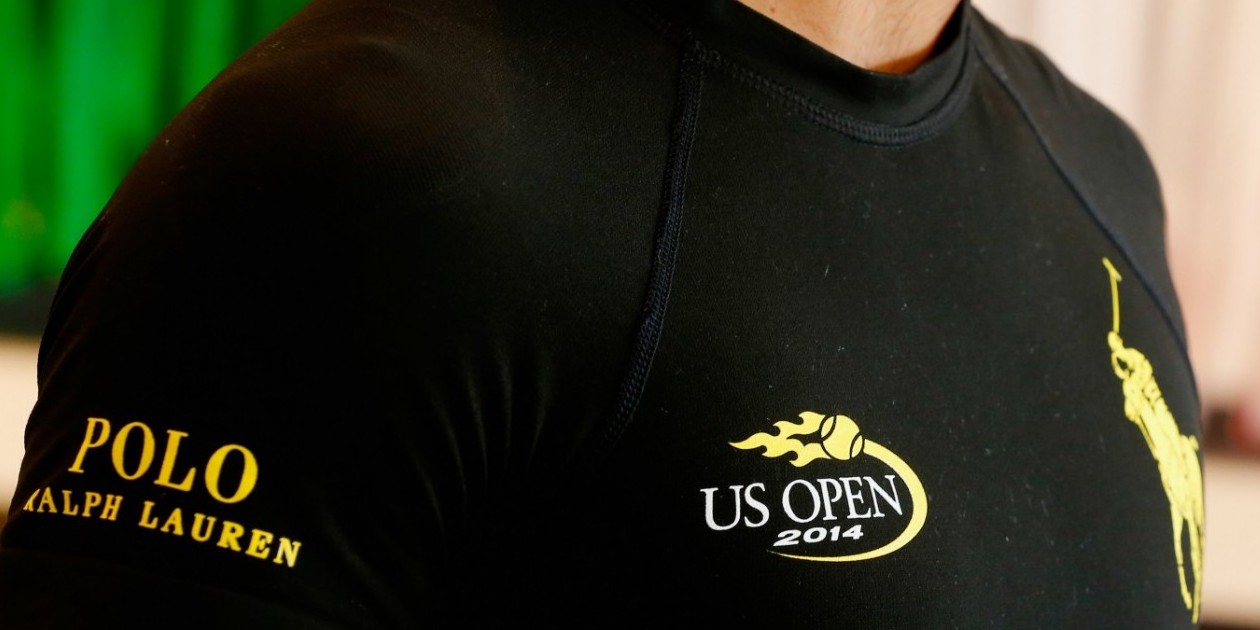Luxury fashion is making inroads in wearable tech as more designers try their hands at developing smart, stylish accessories and clothing aimed at tracking performance and health, or simply making connected lives easier to manage.
“We actually think the fashion industry should be in the driver’s seat,” according to Ayse Ildeniz, vice-president of business development and strategy for Intel‘s new devices group.
Designers are listening.
Luxury brand Ralph Lauren plans to unveil its high-performance smart compression shirt, the Polo Tech, on Monday at the start of the U.S. Open. The company took in feedback from players and ball boys during practice sessions and plans to begin selling the shirt this spring, said David Lauren, an executive vice-president of his father’s namesake company.
Hewlett-Packard Co. called on designer Michael Bastian and online retailer Gilt to develop a high-design smart watch that is Android and iOS compatible, allowing a user to take in notifications for email, text and calls, and to manage music and apps. It reportedly, could hit the market this fall.
And Tory Burch partnered with Fitbit for accessories she designed exclusively for use with the fitness brand’s Flex, including a brass pendant and bracelet, and patterned silicone wristbands.
Does the geek side of the equation need the luxury fashion side? It’s the hope of Lauren that Polo Tech, featuring sensors knitted in to read heartbeat, respiration and other biometrics, will resonate with the fit and the trying-to-get-fit.
Data collected by the shirt is stored by a “black box,” which also is enabled with ways to capture movement and direction. The black box transmits data, including stress levels and energy output, into the cloud for display on a tablet or smartphones.
“What Ralph Lauren is hoping to do is take the technology and to look at opportunities that we believe, and that our customers believe, would help them to live happier and healthier lives,” Lauren said in an interview ahead of the Open, where the company is the official outfitter.
The tennis tournament, he said, is a great testing ground as sports technology has improved in the last year. Football helmets can measure impact and tennis rackets can tell how hard you – or Roger Federer – hit the ball, and how good his – and your – backhand are in real time.
“We’re going to take our time with it now, and we’re going to learn,” Lauren said. “Our goal is to introduce this technology into a variety of different kinds of shirts over the next year.”
Fashion also has Intel’s ear. Ildeniz said at the winter Consumer Electronics Show in Las Vegas that the chip company is collaborating with the design co-operative Opening Ceremony, the Council of Fashion Designers of America and luxury retailer Barneys to find new ways for technology developers and fashion designers to work more closely on wearables.
The first item up is a luxury smart bracelet to be sold at Barneys New York. The idea is to draw other designers in as well. An update on the bracelet will come in the next few weeks, said Humberto Leon, who founded Opening Ceremony.
“Through this relationship, we have truly pushed boundaries of wearable technology by converging fashion and tech,” he said in an email.
According to the NPD Group, the digital fitness category has grown to more than $330 million, a market large enough to accommodate consumers ranging from serious athletes to hobbyists, NPD analyst Ben Arnold said in a statement. A recent NPD study showed that 52% of consumers say they’ve heard of wearable technology devices, including smart glasses, bracelets, watches and fitness tracking devices, and one-in-three say they’re likely to buy one.
The Shine from wearables company Misfit, is a waterproof aluminum orb that comes in nine colours, has been on the market for a year. It sells in big-box stores that include Best Buy and Target, in Apple stores and on Amazon, along with numerous other outlets around the world, said spokeswoman Amy Puliafito.
It retails for $99, with accessories that include a more formal necklace that costs an additional $79.
In September, the device will make an appearance on the New York Fashion Week runway of Chromat and its designer Becca McCharen. She’s a former urban planner known for structural exoskeletons worn by Beyonce, Nicki Minaj and Madonna.
“Knowing your pulse, your wellness level and your activity level should be something that isn’t a burden, isn’t something that people don’t look forward to, so having something beautiful makes it way more fun and way more enjoyable for the consumer,” said Puliafito.
Adam Roth, the CFDA’s director of strategic partnerships, is the fashion trade group’s point person on the Intel collaboration. He also helped with a recent roundtable where Intel designers sat down with about 70 fashion designers to exchange ideas.
“There are so many wearable products coming out,” Roth said. “Not every one is useful but may look beautiful. Not every one is beautiful but is really useful. We’re getting to the sweet spot, where it’s both.”











